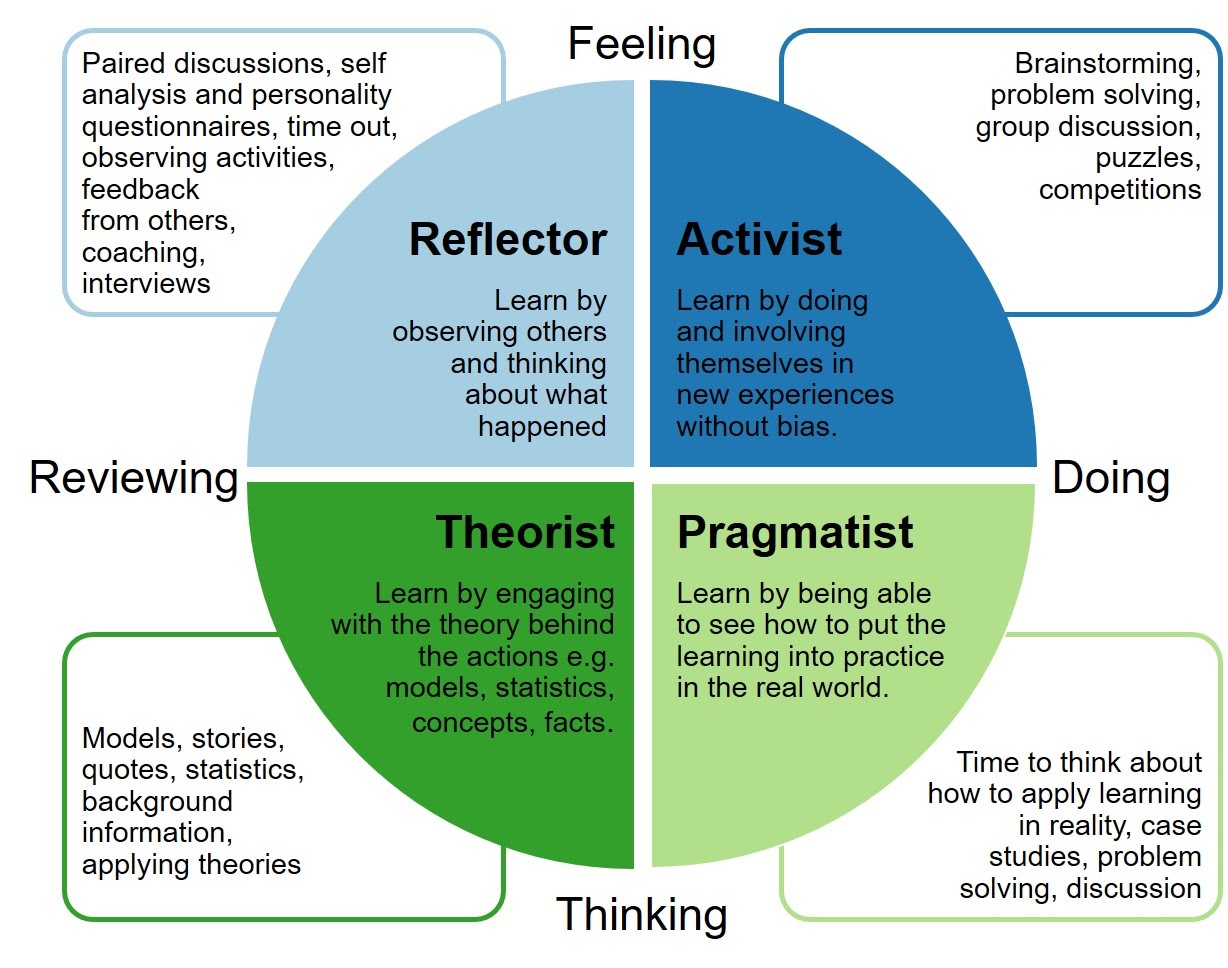At its most basic, learning is the process of gaining knowledge and understanding, but it is also the process of acquiring behaviours, skills, values, attitudes, and preferences. In this course we will talk about learning knowledge, but also learning skills, norms of science, about the scientific process, attitudes, awareness, and developing roles and expertise.
Learning styles are the ways human beings prefer to concentrate on, store and remember new and/or difficult information. For example, some prefer to learn by hearing, some by seeing, others by doing, some by reading and others by asking questions. Some frequently favour more than one learning style. Understanding how your participants learn will allow them to get the most from their citizen science experience. Figure 1 shows the broad categories of learning styles defined by Honey and Mumford (1982), and how different alongside activities are appropriate for each learning style.

Figure 1: Honey and Mumford’s (1982) Learning Styles: Reflector, Activist, Pragmatist and Theorist, their preferred way of learning and activities appropriate for each learning style.
Participants in citizen science projects are likely to learn something, whether or not projects are created or adapted with learning in mind. However, the decisions that practitioners make when they design citizen science projects, whether consciously or not, have a significant impact on learning outcomes. Citizen science projects are not all designed with the same focus on learning outcomes for participants, so we must acknowledge:
The range of practitioners and of potential participants, as well as their needs.
Planning for meeting the needs of the intended participants is vital.
The opportunity to make meaningful/authentic contributions to science and communities creates unique learning opportunities.
Focusing on learning advances broader citizen science project goals.
Designing for diversity maximizes learning opportunities for all participants, and not just the demographic of the practitioner or dominant group.
Designing for learning is the application of learning theory to citizen science contexts, in both formal and informal settings, and for a variety of participants. Whilst this training does not cover the theory of learning, the frameworks of science capital and environmental science agency (ESA) are most relevant and useful to understand when considering participation in citizen science and learning. The following video (2:08) introduces science capital and you can read about ESA in this research brief from the UC Davis Center for Community and Citizen Science.
This training applies guidance from the field of design for learning to citizen science with illustrative examples. The recommendations may appear general, but design for learning provides tried and tested recommendations that can be applied effectively to citizen science. Whilst design strategies unique to citizen science are still being explored, citizen science offers unique potential for STEM learning. This is what we will explore next.